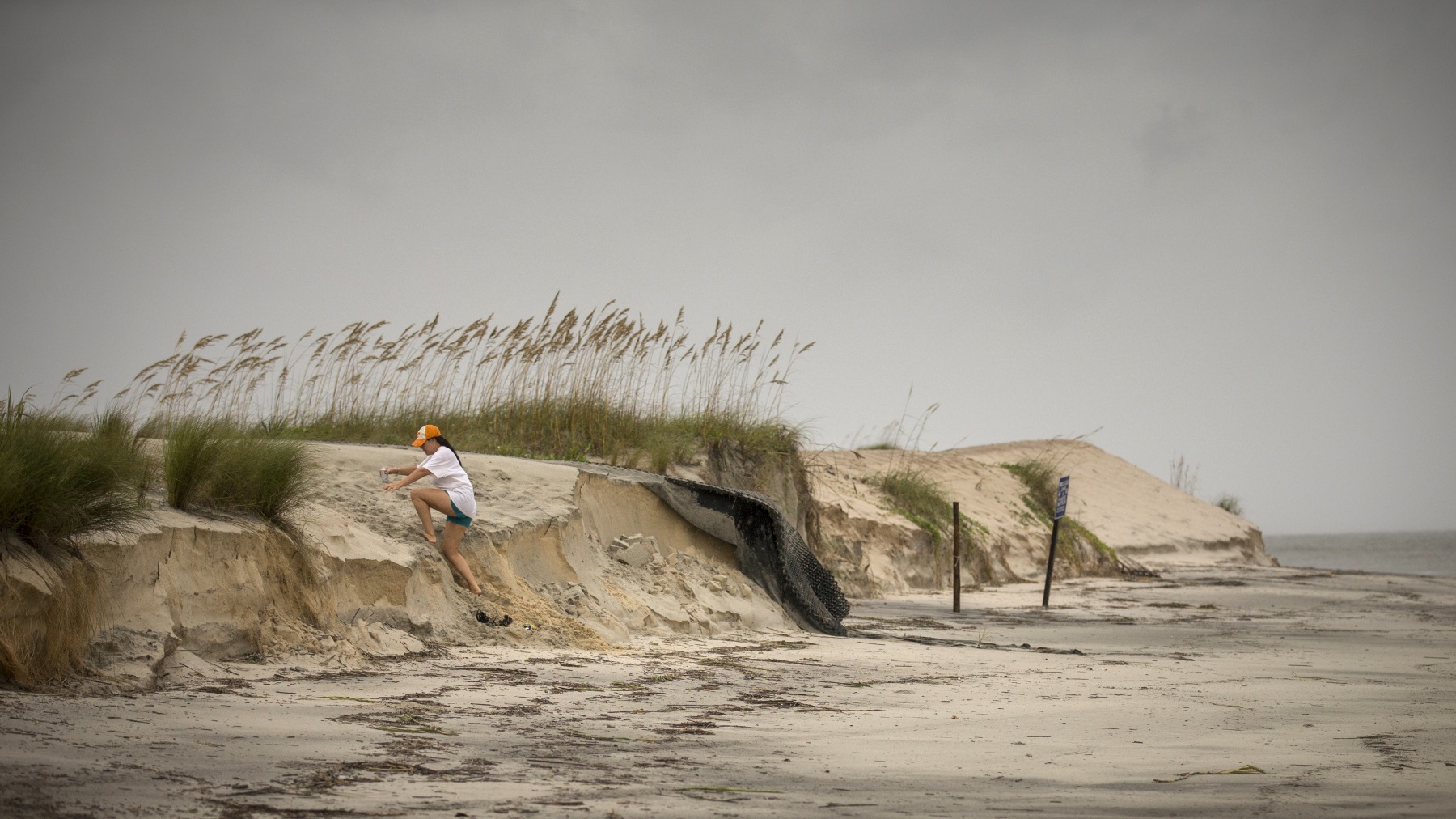Updated at 11:45 a.m. Thursday
Hurricane Dorian raked the Southeastern U.S. coast with howling, window-rattling winds and sideways rain Thursday, knocking out power to more than 200,000 homes and businesses as it pushed northward toward North Carolina’s dangerously exposed Outer Banks.
Leaving at least 20 people dead in its wake in the devastated Bahamas, Dorian made its way up the Eastern Seaboard, sweeping past Florida on Wednesday at a relatively safe distance. From there, the storm apparently grazed Georgia, then hugged the South Carolina coast with more serious effects.
It strengthened briefly to a Category 3 hurricane, then dropped back to a Category 2, with winds of 110 mph, still a threat to hundreds of miles of coastline.
“Get to safety and stay there,” North Carolina Gov. Roy Cooper said. “This won’t be a brush-by. Whether it comes ashore or not, the eye of the storm will be close enough to cause extensive damage in North Carolina.”
An estimated 3 million people in Florida, Georgia and the Carolinas were warned to evacuate as the storm closed in with the potential for life-threatening storm surge. Navy ships were ordered to ride it out at sea, and military aircraft were moved inland.
At least two deaths were reported on the U.S. mainland, in Florida and North Carolina, both involving men who fell while getting ready for the storm.
Along Coast
The National Hurricane Center’s projected track showed Dorian passing near or over the Outer Banks on Friday, lashing the thin line of islands that stick out from the U.S. coast like a boxer’s chin. Dorian was then expected to peel away from the shoreline.
In an assault that began over Labor Day weekend, Dorian pounded the Bahamas with Category 5 winds up to 185 mph, obliterating entire neighborhoods and triggering a humanitarian crisis. It weakened to a Category 2 before strengthening again late Wednesday.
About 830,000 people were under mandatory evacuation orders on the South Carolina coast alone.
More than 1,500 people sought refuge in 28 shelters in South Carolina, where rain began falling late Wednesday in the historic port city of Charleston, situated on a peninsula that is prone to flooding even from ordinary storms.
As Dorian crept dangerously closer to the city, the wind picked up, sending sheets of rain sideways. Thunder boomed in the night sky, and power flickered on and off. More than two dozen blocks were closed by flooding in the city, where stores and restaurants downtown were boarded up with wood and corrugated metal.
Dorian also apparently spun off at least one tornado in North Myrtle Beach, South Carolina, damaging several homes, city spokesman Patrick Dowling said. No injuries were reported.
At 8 a.m. Thursday, the hurricane was centered about 70 miles southeast of Charleston, moving north at 8 mph with winds of 115 mph extending about 60 miles outward.
Hundreds of shelter animals from coastal South Carolina arrived in Delaware ahead of the storm. The News Journal of Wilmington, Delaware, said 200 were airlifted early Tuesday from shelters in danger of flooding. About 150 more were expected to arrive via land.
In Georgia
Hundreds of thousands of people also were ordered off the Georgia coast.
But the mayor of Tybee Island, Georgia, said Dorian inflicted little damage overnight on the small beach community. Jason Buelterman said the storm spared the 3,000 residents from flooding, with high tide about 3 feet lower than predicted.
The lone highway linking the island to Savannah on the mainland remained open throughout the night.
“If the worst that comes out of this is people blame others for calling evacuations, then that’s wonderful,” Buelterman said.
Tybee Islander Bruce Pevey went outside to take photos of unscathed homes to text to neighbors who evacuated. The storm, he said, turned out to be “a bunch of nothing.”
Georgia Gov. Brian Kemp has lifted evacuation orders along the Georgia coast.
Kemp tweeted Thursday morning that residents can return to the state’s six coastal counties after the storm passed near the shoreline overnight.
Many of the 530,000 people in coastal Georgia stayed to ride out Dorian. Glynn County spokesman Matthew Kent said all roads and bridges were open to St. Simons Island, home to about 12,000 people roughly 70 miles south of Savannah.
Kent said a few hundred people on the island were without power and work crews were cleaning up fallen tree limbs. But none of it compared to the wind and flood damage inflicted by Hurricane Matthew in 2016 and Irma in 2017.









